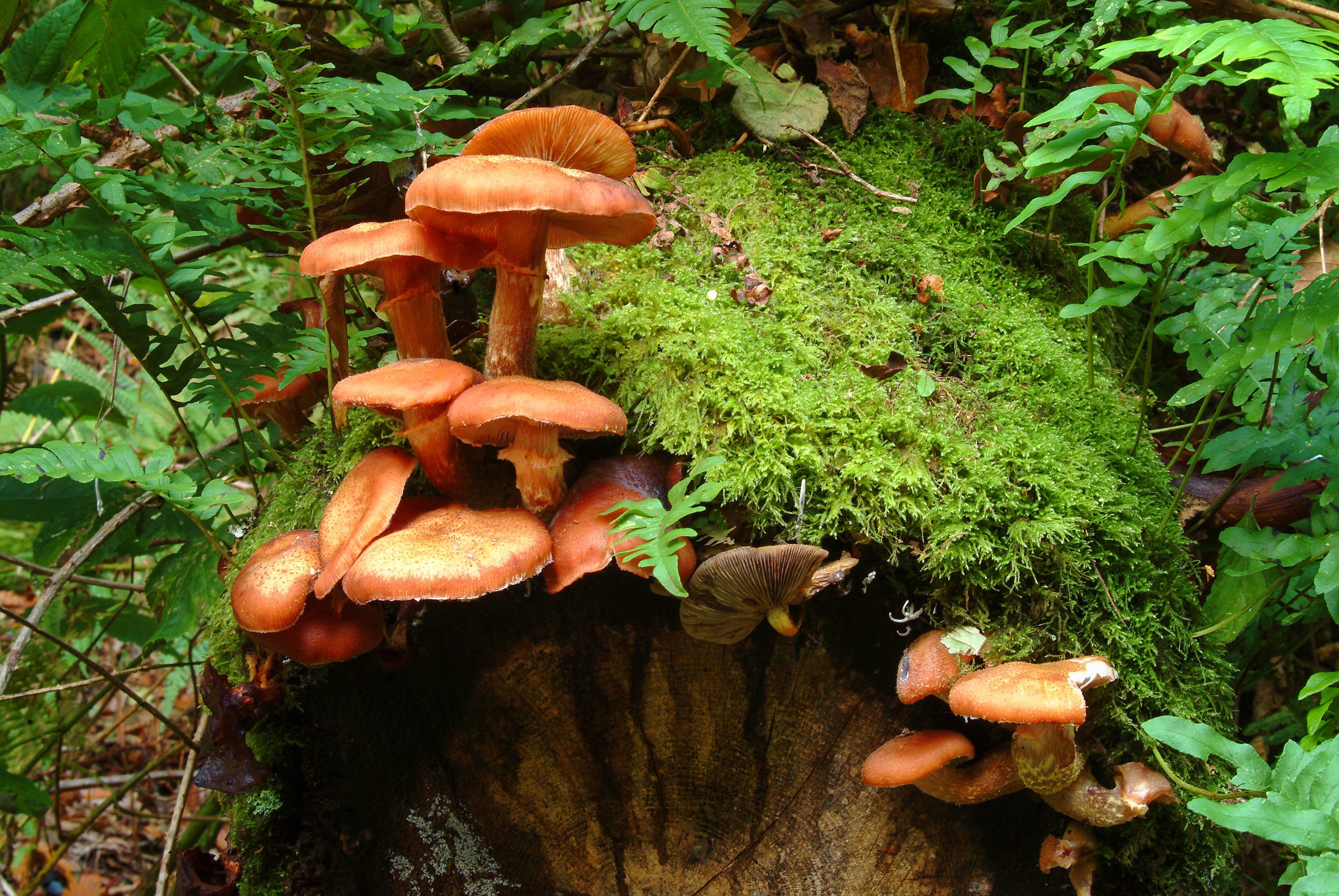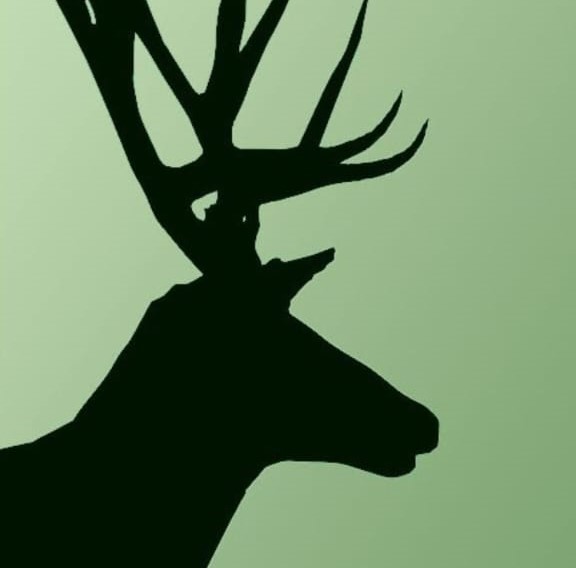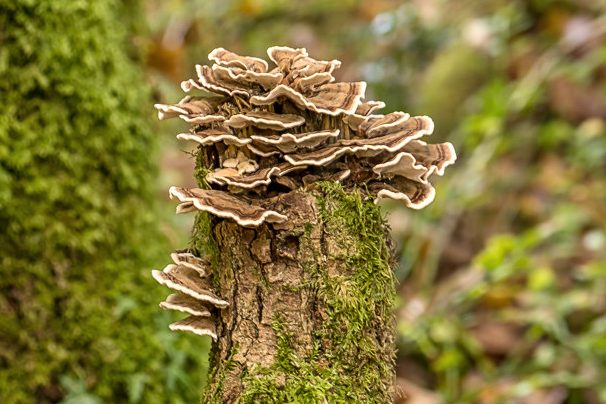
Photos by Shaun Davey and Neville Stanikk
📋 In This Article:
When the damp, cooler weather arrives, that hidden world erupts into view. Mushrooms, brackets, puffballs, and toadstools appear seemingly overnight — the visible “fruit” of an organism that is mostly unseen. For anyone who loves nature, this is one of the most enchanting times to explore the moor and woodland.
Mushrooms: A Hidden Kingdom Revealed
Fungi are astonishingly diverse. The UK is home to around 15,000 species, and Exmoor and the Quantocks host hundreds of them. A single autumn walk might reveal ruby-red Fly Agaric (Amanita muscaria), tiny translucent bonnets, or shelf-like Turkey Tail fungi climbing the trunks of ancient oaks.
You don’t need to eat mushrooms to enjoy them. Observation, photography, and gentle collecting for identification (not consumption) open a fascinating world of science and art. When done carefully, small-scale study helps deepen understanding — without harming the habitat.
How to Observe and Identify Fungi
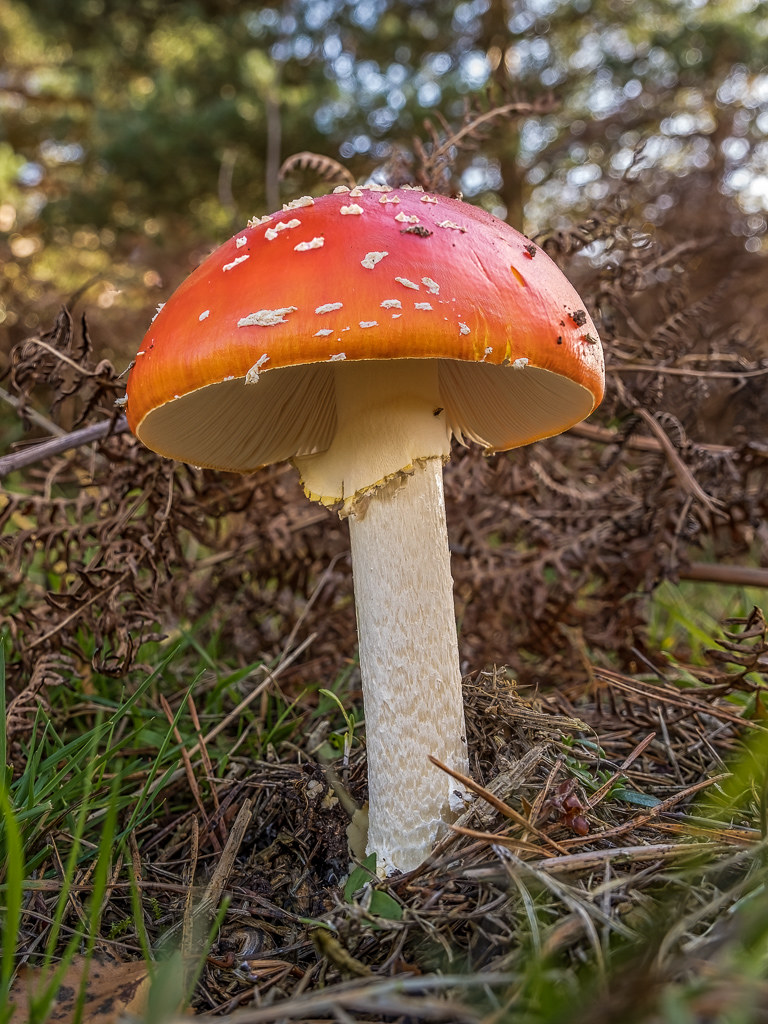
Photos by Shaun Davey and Neville Stanikk
Learning to identify mushrooms teaches you to see the forest differently. Each species has distinctive features, and no single clue tells the whole story. Understanding these characteristics is essential for safe identification.
When studying fungi, note:
- Gills, pores, or spines on the underside of the cap
- Stipe (stem) shape, colour, and texture
- Bruising colour when gently pressed
- What it’s growing from — soil, wood, moss, or dung
- Smell (some are pleasant, others unforgettable!)
A simple but useful learning exercise is to make a spore print: place the cap (gills or pores down) on white or black paper, cover it with a bowl, and leave overnight. The colour of the spores helps narrow down identification. Even so, a spore print alone is never enough for safe identification — some species can only be confirmed microscopically or through DNA analysis.
For those keen to learn, Roger Phillips’ Mushrooms remains one of the best illustrated field guides for British fungi and a wonderful companion to autumn walks on Exmoor’s woodland trails.
Medicinal and Mythical Mushrooms
Human fascination with fungi runs deep. Some species have been used in traditional medicine for centuries — though modern research is still unravelling the science behind those claims.
- Turkey Tail (Trametes versicolor) – A common bracket fungus known for its beautiful layered colours. It’s being studied for potential immune-supporting properties and is frequently spotted on dead wood throughout Exmoor’s ancient woodlands.
- Lion’s Mane (Hericium erinaceus) – A rare, ghostly-white fungus said to aid cognitive function. It is endangered and protected in the UK — it is illegal to pick or disturb this species. If you spot one, admire it and report it to a local wildlife recorder.
These examples remind us that fungi are not only vital to woodland health — they also inspire medicine, folklore, and art. Bristol Fungarium crafts beautiful tinctures and even medicinal chocolate inspired by fungi like Lion’s Mane and Turkey Tail. Many visitors to Exmoor’s wildlife-rich habitats find that observing these fascinating organisms adds depth to their autumn experience.
The Forager’s Code: Learn First, Pick With Care
If you’re planning to pick fungi for identification (never for eating unless guided by an expert), follow the UK Forager’s Code to protect both yourself and the environment.
- Never eat anything unless an expert confirms it.
Some deadly species, such as Death Cap and Destroying Angel, look almost identical to edible ones. Mistaken identity can be fatal. - Collect for learning, not the pot.
Picking a single mature specimen to study or photograph can be useful — but only for education or personal interest. - Take less than half of what you find.
Leave plenty to reproduce and feed wildlife. - Avoid protected areas such as SSSIs and National Nature Reserves.
Exmoor’s Horner Wood and similar sites are legally protected — no foraging is allowed there. - Use a basket or mesh bag.
This allows spores to fall and spread naturally as you walk. - When in doubt — leave it be.
Even experts sometimes hesitate. Curiosity is good; caution is better.
Emergency Identification — For Serious Situations Only
⚠️ If someone has eaten a wild mushroom and feels unwell:
- Treat it as an emergency — call NHS 111 or go directly to A&E. (Or emergency Vet if a pet is affected)
- If possible, keep a sample of the mushroom and any remains (including vomit) for identification.
- Post clear photos immediately to the UK Emergency Mushroom Identification Facebook Group — run by trained mycologists who assist hospitals in identifying toxic species. (This group is for genuine medical emergencies only, not casual ID requests.)
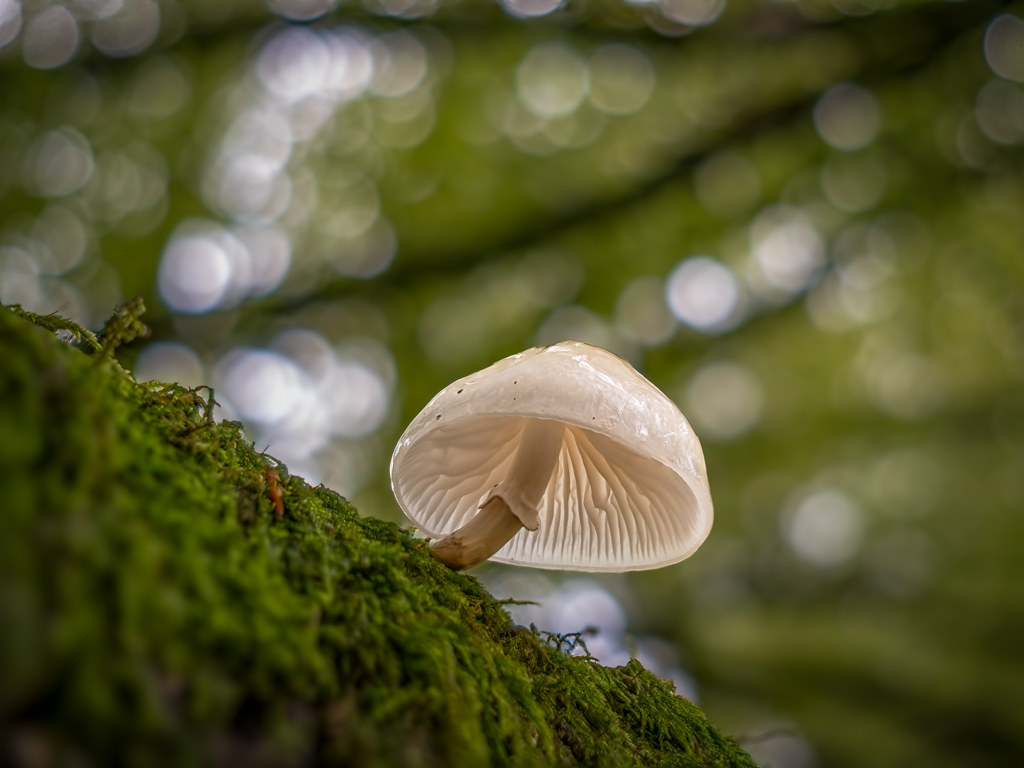
Photos by Shaun Davey and Neville Stanikk
Join a Guided Foraging Walk
The best and safest way to learn about fungi is to join an expert-led walk. Local foragers and mycologists run small group events across Exmoor and the Quantocks during autumn. You’ll learn to identify key species, understand their ecological roles, and practice the Forager’s Code in the field.
- Exmoor Fungus Group — Local experts offering seasonal fungus forays
- Exmoor Dark Skies Festival — Often includes autumn foraging events
These guided walks typically take place in September through November when fungi are most abundant. Booking ahead is recommended as spaces fill quickly during peak season.
Frequently Asked Questions
When is the best time to see mushrooms on Exmoor and the Quantocks?
Autumn is peak mushroom season, usually from September to November, though some species appear as early as late summer after rain. The damp, cooler weather of autumn triggers the fruiting bodies to emerge, making it the ideal time for mushroom spotting on woodland walks.
Can I pick mushrooms on Exmoor or the Quantocks?
You may pick small amounts for identification and learning in most public areas, but not in protected sites such as SSSIs or National Nature Reserves. Always follow the Forager’s Code and never pick protected species like Lion’s Mane. Leave plenty for wildlife and spore dispersal.
Are there poisonous mushrooms in the UK?
Yes. Some species, like the Death Cap and Destroying Angel, are deadly and can look similar to edible varieties. Never eat anything unless confirmed safe by an expert mycologist. Even experienced foragers can make mistakes, so caution is essential.
What’s the safest way to learn about wild fungi?
Join a guided foraging walk with the Exmoor Fungus Group or study with a reputable field guide such as Mushrooms by Roger Phillips. Observation and photography are the best ways to start learning about fungi without risk.
What is a spore print and how do I make one?
Place a mushroom cap (gills or pores down) on paper, cover it with a bowl, and leave overnight. The colour of the spores helps identify the species — but it’s only one of many clues. White, black, brown, pink, or purple spores can indicate different mushroom families.
What should I do if someone eats a wild mushroom and feels unwell?
Call NHS 111 or go straight to A&E immediately. Keep a sample of the mushroom if possible and contact the UK Emergency Mushroom Identification Facebook group for help with identification. Time is critical in cases of mushroom poisoning.
What role do fungi play in Exmoor’s woodland ecosystems?
Fungi are essential decomposers that recycle nutrients from dead wood and plant matter. Many form symbiotic relationships with trees through mycorrhizal networks, helping trees absorb water and nutrients while receiving sugars in return. They’re vital to woodland health.
Conclusion: A Final Word
Fungi are the unsung heroes of our ecosystems — recyclers, healers, and hidden architects of the woodland web. They remind us that the world beneath our feet is alive with mystery and complexity.
So this autumn, wander slowly, look closely, and admire their beauty. Learn first, respect always, and leave Exmoor’s wild fungi just as you found them — thriving for those who follow.
Plan Your Autumn Escape
Autumn is one of our guests’ favourite times to visit Exmoor. The woodlands glow with russet and gold, the air is crisp, and the moor is peaceful once again. Whether you’re here for fungi spotting, long walks, or cosy evenings by the fire, it’s the perfect season to unwind.
Discover our cottages and plan your autumn escape today at The Best of Exmoor.
